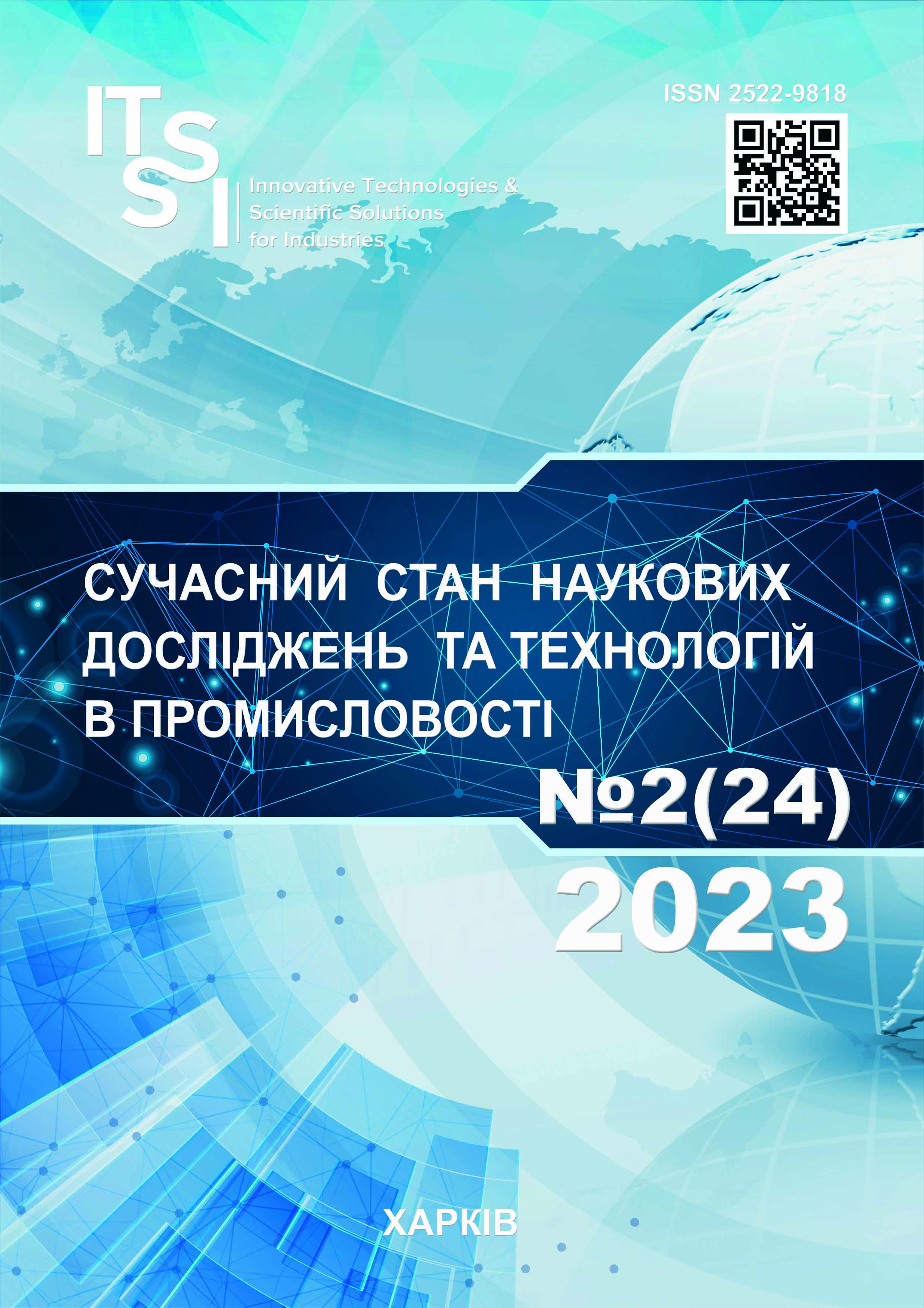TRANSFORMATION OF VALUES OF THE HIGH TECHNOLOGY PROJECTS FROM A VUCA TO A BANI ENVIRONMENT MODEL
DOI:
https://doi.org/10.30837/ITSSI.2023.24.191Keywords:
VUCA-world; BANI-world; high technology project; nuclear project; values; risk managementAbstract
The article is dedicated to the study of impact of a BANI-world conditions to implementation of the high technology industrial projects and in particular of the nuclear industry projects. The purpose of the article is to analyze tendencies of changes of different factors related to the high technology nuclear project implementation against the changing conditions of the environment. The object is the project management methodologies in the BANI environment. The subject is theoretical analysis of the values differentiation in between the VUCA and BANI worlds, key aspects of BANI impacting implementation of the nuclear projects. Tasks to be solved: to analyze the transformation from the VUCA model to the BANI model, to present values and their differentiation as the basis for survival in the new world order, to develop a method for assessing project risks in the BANI environment. Methods: practical empirical analysis of nuclear project risks in comparison with BANI-model forecasts, applied research, project risk management methodology, probability theory. The following results were obtained: the differences between the values of s VUCA and BANI are determined, an understanding of the general changes that have arisen due to the functionality of the environment is provided, the project management methodology applicable in the BANI environment is analyzed, a qualitative and quantitative risk analysis based on BANI projections is implemented on the example of a nuclear project in Ukraine, and the grounds for determining the most influential BANI forecast are proposed. The main results of the research are identification and analysis of values and their differentiation in the process of transformation from the VUCA to the BANI world, proposals for the project management approach which could cover the needs of the nuclear project and the consequences of this transformation. To estimate risks, it was proposed to use qualitative and quantitative methods of risk assessment. The case study of one of the nuclear projects in Ukraine, and a mixed classic-Agile methodology for the management of the nuclear project was performed. Conclusions: risk management of the nuclear projects has to be carried out based on the impact of the BANI-projections to identified risks.
References
References
Chui, M., Roberts, R., Yee, L. (2022), McKinsey Technology Trends Outlook 2022", McKinsey and Company, available at: https://www.mckinsey.com/capabilities/mckinsey-digital/our-insights/the-top-trends-in-tech
Cascio, J. (2020), "Facing the Age of Chaos", available at: https://medium.com/@cascio/facing-the-age-of-chaos-b00687b1f51d
European Atomic Energy Community, (2006), Food and Agriculture organization of the United Nations, International Atomic Energy Agency, International Labour Organization, International Maritime Organization, OECD Nuclear Energy Agency, Pan American Health Organization, United Nations Environment Programme, World Health Organization, Fundamental Safety Principles, IAEA Safety Standards Series No. SF-1, IAEA, Vienna
IAEA. INFCIRC/140, (1970), "Treaty on the Non-Proliferation of Nuclear Weapons", International Atomic Energy Agency, available at: https://www.iaea.org/sites/default/files/publications/documents/infcircs/1970/infcirc140.pdf
Godoy, M. F. de, Ribas Filho, D., (2021), "Facing the BANI World", International Journal of Nutrology, 14(2), 33. DOI: https://doi.org/10.1055/s-0041-1735848
Obradović, V., Todorović, M., Bushuyev, S., (2018), "Sustainability and Agility in Project Management: Contradictory or Complementary?", 2018 IEEE 13th International Scientific and Technical Conference on Computer Sciences and Information Technologies (CSIT), Lviv, Ukraine, P. 1–5, DOI: 10.1109/STC-CSIT.2018.8526666.
Bushuyev, S., Tanaka, H., Elmas, Ch., Babayev, I., (2022), "Inspirational intuition and innovation in it project management", Scientific Journal of Astana IT University, No. 10. DOI: http://dx.doi.org/10.37943/IXYM7063
Bushuyev, S., Verenych, O., (2018), "The Blended Mental Space: Mobility and Flexibility as Characteristics of Project/Program Success", IEEE 13th International Scientific and Technical Conference on Computer Sciences and Information Technologies, CSIT 2018. DOI:10.1109/STC-CSIT.2018.8526699
"Individual competence baseline for Project, Programme and Portfolio management (IPMA ICB)", IPMA, 2015. Version 4.0. 431 p.
"IPMA Organisational Competence Baseline (IPMA OCB)", IPMA, 2013. 67 p.
Todorović, M., Petrović, D., Mihić, M., Obradović, V., Bushuyev, S., (2014), "Project success analysis framework: A knowledge-based approach in project management", International Journal of Project Management, DOI:10.1016/j.ijproman.2014.10.009
Kosenko, V, Bugas, D (2015), "Effectiveness analysis of resource usage of multiservice information and telecommunication network", Technology audit and production reserves, Vol. 5. No. 2(25). P. 19–23. DOI: 10.15587/2312-8372.2015.51710
Kosenko, V. (2017) "Principles and structure of the methodology of risk-adaptive management of parameters of information and telecommunication networks of critical application systems", Innovative Technologies and Scientific Solutions for Industries, No. 1(1), Р. 46–52. DOI: 10.30837/2522-9818.2017.1.046
Bondar, A., Onyshchenko, S. (2020), "Experimental studies of a model for optimizing the portfolio of a project-oriented organization based on the entropy concept", Innovative Technologies and Scientific Solutions for Industries, No. 4(14), Р. 21–30. DOI: 10.30837/ITSSI.2020.14.021
Bondar, A. (2020), "Energy-entropic value of organization’s resources", Innovative Technologies and Scientific Solutions for Industries, No. 2 (12), P. 5–12. DOI: https://doi.org/10.30837/2522-9818.2020.12.005
Downloads
Published
How to Cite
Issue
Section
License
Copyright (c) 2023 Сергій Бушуєв, Катерина Пілюгіна, Еламс Четін

This work is licensed under a Creative Commons Attribution-NonCommercial-ShareAlike 4.0 International License.
Our journal abides by the Creative Commons copyright rights and permissions for open access journals.
Authors who publish with this journal agree to the following terms:
Authors hold the copyright without restrictions and grant the journal right of first publication with the work simultaneously licensed under a Creative Commons Attribution-NonCommercial-ShareAlike 4.0 International License (CC BY-NC-SA 4.0) that allows others to share the work with an acknowledgment of the work's authorship and initial publication in this journal.
Authors are able to enter into separate, additional contractual arrangements for the non-commercial and non-exclusive distribution of the journal's published version of the work (e.g., post it to an institutional repository or publish it in a book), with an acknowledgment of its initial publication in this journal.
Authors are permitted and encouraged to post their published work online (e.g., in institutional repositories or on their website) as it can lead to productive exchanges, as well as earlier and greater citation of published work.














